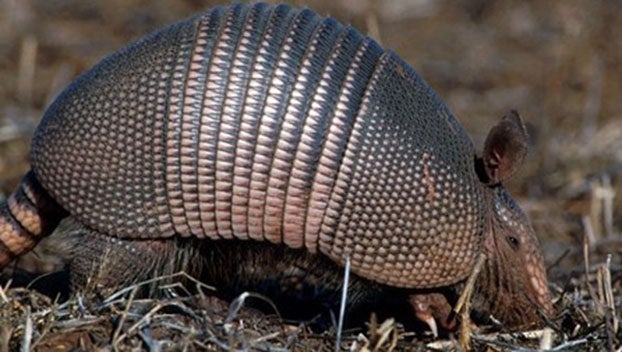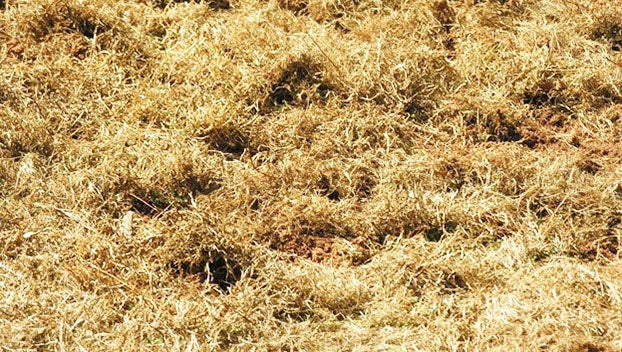MASTER GARDENER — Best options for dealing with armadillos in Southeast Texas
Published 5:00 am Monday, January 23, 2023

- Not everyone thinks armadillos are great. Armadillos often cause problems with homeowners, gardeners, farmers or anyone else who feels perturbed to find one of these “digging machines” wandering around the yard. (Courtesy of the National Wildlife Federation)
|
Getting your Trinity Audio player ready...
|
Gardeners, it is going to be cold this week (for me anyway), enough said, not going to complain about the weather-too much.
I’m making good on a request from a fellow Master Gardener this week, who shared a recent conversation with a neighbor. The neighbor would like information on how to discourage or eradicate a wildlife burden from her landscape, yard and gardens.
The “critter control” topic is armadillos. I’m sharing specifics to aid you in curbing the armadillo’s “playground,” AKA your lawn and garden. Gardeners let’s be certain we have an armadillo problem, before we take steps to evict them, it’ll save you time, money and lower your stress level.
Begin by walking about the yard, inspecting the lawn, flower beds and vegetable gardens. All the while looking for evidence of armadillo damage, such as uprooted plants, shallow holes all over the lawn (3 to 4-inches wide and deep), or burrows (large holes in the ground) around compost & brush piles, rocks and stumps.
Soil mounded around the holes might be another animal, like gophers, moles or even skunks!
We also need to understand a few things about armadillos, which are curious, and unique animals. Like all animals, food is what draws armadillos to your yard and perhaps yours is the “best supermarket” in the neighborhood, a veritable smorgasbord, intoxicating to an armadillo!
For most of us, they are not a problem, except occasionally. Some people affectionately call them “dillos” (most gardeners, me included, use other terms … stronger terms … expletives even, if damage is severe, not terms of endearment).
They have a keen sense of smell, enabling them to locate their favorite foods easily. They are nocturnal, voracious feeders with insatiable appetites who continually search for invertebrates and berries.
During the day, as they sleep, no doubt ‘dreaming’ of foraging! Perhaps now a couple of questions have come to mind, such as what can be done to curtail the nocturnal wandering of these animals, or how to keep armadillos out of my yard?

Armadillos are voracious feeders, whose appetite for insects and grubs is insatiable. In a short amount of time, one night, an armadillo can dig up your entire lawn. (Courtesy of Walter Reed-The Georgia Gardener)
The most expensive solution is to build a fence, which is buried 18 to 24-inches in the ground, anything less and an armadillo will certainly find its way through! The cost of installing a fence is significant, even for small areas, so for most of us, it’s not going to be an option.
Another option is to purchase battery operated ultrasonic pest deterrents. They are available through online retailers, while some are even solar powered units (beats trying to remember to replace batteries).
Several of these models state they deter and remove armadillos, moles, voles, skunks, opossums, as well as other nocturnal visitors from your yard. I learned that more than one third of an armadillo’s brain is used for their olfactory sense.
We can utilize the armadillo’s keen sense of smell to our advantage, since the least expensive option is incorporating strong, noxious odors into their environment, effectively delivering them an eviction notice and curtailing their wandering habits! Note using strong odors is temporary fix, requiring “refreshing” and they might return.
As a side note, some professional exterminators may not agree with using the noxious odors to eradicate armadillos, perhaps they are biased due to their business model? Use the items below to assist in evicting armadillos from your yard.
• Soaking rags in vinegar may also provide relief from the pesky marauders. Placing soaked rags strategically around flowers, vegetables, shrubs, and trees can provide damage relief but needs to be “refreshed” frequently, say every couple of days.
• Sprinkling ground cayenne pepper around plants also provides protection for them.
There are two armadillo repellent recipes, which can be made at-home (not personally tested) which may provide relief from these and other nocturnal marauders.
Recipe 1: Castor Oil and Liquid Dish Detergent. In a garden hose sprayer, mix 16 ounces Castor Oil and 4 ounces of Liquid Dish Detergent. Fill to volume with water, mix thoroughly. Spray the entire content over about a 3000 square feet area. Note: Castor oil will stain clothes.
Recipe 2: Ground Cayenne pepper and 20 lbs. sand. In a 5-gallon bucket, mix 5 ounces ground cayenne pepper granules with about 2 gallons sand. Blend the two together until evenly mixed. Use a drop spreader to cover up to 2000 sq feet of lawn. Water the lawn immediately after applying, as the pepper needs to be washed into the soil. Wear goggles, mask and gloves when working with these ingredients since cayenne pepper will burn your eyes.
Having armadillos in your yard isn’t always a bad thing as they reduce the insect and grub load on our lawns, consuming them-the best form of environmental pest control and no chemicals needed! Digging for their food source, aerates our clay soil, decompresses compacted soil encouraging a healthy lawn and garden.
John Green is a Certified Texas Master Gardener. If you have gardening questions or need more information, contact the Orange County Master Gardeners Helpline at 409-882-7010 or visit txmg.org/orange, Orange County Texas Master Gardeners Association on Facebook or email extension@co.orange.tx.us.





